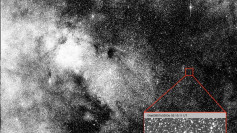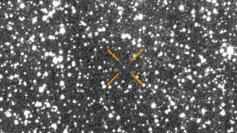China's Tianwen-1 Mars probe has captured newly released images of the interstellar object 3I/Atlas during its recent passage near the Red Planet, providing researchers with rare visual data and fueling renewed scientific debate over the object's origins and physical composition. The observations add another layer to what has become one of the most closely watched astronomical events of the year, with scientists in China, Europe, and the United States examining the probe's findings.
3I/Atlas is only the third known interstellar object to pass through the solar system, following 1I/ʻOumuamua in 2017 and 2I/Borisov in 2019. First detected earlier this year by the ATLAS survey program in Chile, the object has drawn interest because of its irregular brightness, unusual reflectivity patterns, and trajectory, which clearly indicate it originated outside the Sun's gravitational influence.
The newly released imagery taken by Tianwen-1 shows 3I/Atlas as a faint, diffuse body without a visible tail-an unexpected feature for an object that passed near the Sun. Conventional cometary physics suggests that when comets are heated by solar radiation, evaporating ices create a surrounding gas coma and a tail that extends away from the Sun. Researchers analyzing the footage say 3I/Atlas does not conform to that model.
The absence of a tail has prompted several working hypotheses. One interpretation is that 3I/Atlas is more similar to an asteroid, composed primarily of rocky material rather than ice. Another suggests that outgassing may be occurring beneath the surface or in a highly directional manner that makes the tail difficult to detect from certain viewing angles. Scientists also note the possibility of non-gravitational acceleration, a phenomenon observed in the interstellar object 1I/ʻOumuamua, which subtly altered its speed and trajectory in ways not easily explained by gravity alone.
The footage from Tianwen-1 is especially significant because it was captured from a vantage point outside Earth's orbit. Most observational data on interstellar visitors to date has been Earth-based, limiting the precision with which researchers can track their movement and physical characteristics as they interact with solar radiation.
The timing of the probe's capture of 3I/Atlas also positions the object for continued monitoring. Now moving away from the Sun, it will remain within range of telescopes for several months, offering an opportunity for follow-up observations of its surface composition and rotational behavior.




